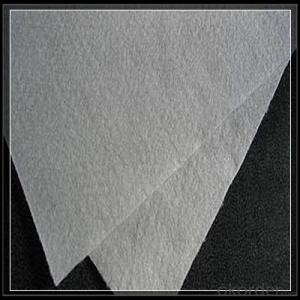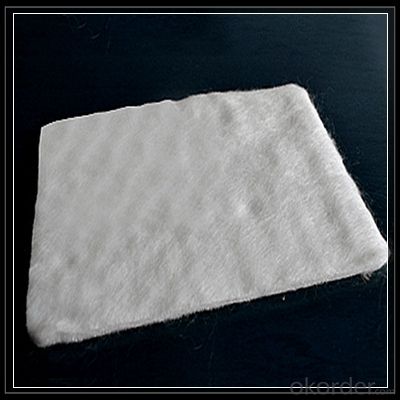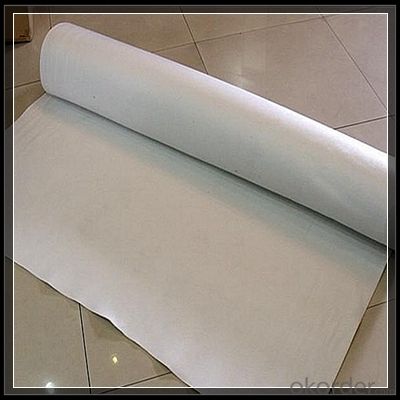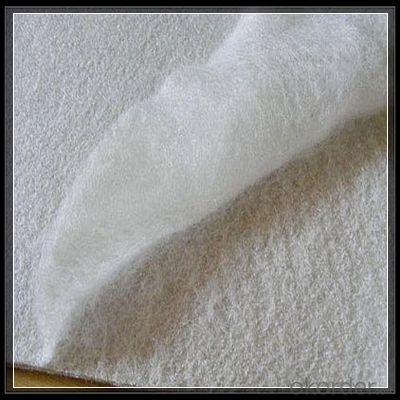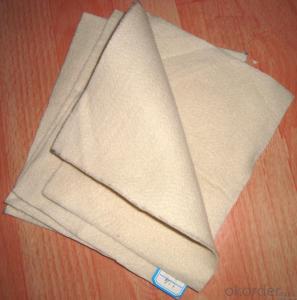Jmd Geotextile - High Stabilization Geo Textile Industrial Nonwoven Fabric
- Loading Port:
- China main port
- Payment Terms:
- TT OR LC
- Min Order Qty:
- 1000 m²
- Supply Capability:
- 1000000 m²/month
OKorder Service Pledge
OKorder Financial Service
You Might Also Like
Specification


1: UV 500 hours after reservation 70% of
2: Tensile Strength / (KN / M) ≥ 7.5
3: elongation ≥ /% 45
4: Weight :120-140G per square meter
Features:
High strength, puncture resistance and strong;
Acid, anti-corrosion, anti-microbial, anti-aging;
Polyester filament geotextile fabric has excellent permeability, filtration, protection Soil, played isolation, drainage filters, protective role;
Low cost, excellent price, simple construction, easy to use.
Packaging & Shipping
Packing: PLASTIC FILM INSIDE, AND WOVEN BAG OUTSIDE
Shipping: About 15 days after receipt the deposit
geotextile fabric
permeability,filtration,easy for construction
ISO and CE certificate
Good quality and competitive price
Our Service
Quality assurance
1.On a regular basis or as per your request,we entrust national testing agencies to conduct quality inspections
2. Strictly in accordance with the ISO9001-2008 international quality system standard,we monitor and manage the whole process throughout production,quality testing,and measurement to ensure product quality
3. For quality-related construction delay or substandard construction(except for damage or losses due to customer’s responsibility or irresistible natural disasters),we have refunding,replacement,and repair services.We will respond to customers’ feedbacks on quality issues within 24 hours.
FAQ:
Q: What kind of payments does jenor support?
A: T/T, L/C, Cash are accepted.
Q: Do you charge for the samples?
A: Accordeing to our company policy, the samples are free, we only charge the freight fee. And we will return the freight fee during the next order.
Q: Can you produce according to customers' design?
A: Sure, we are professional manufacturer, OEM and ODM are both welcome.
Q: Do you have other products?
A: Yes, please check the pictures:
- Q: How do geotextiles help with sediment control in construction sites?
- Geotextiles are used in construction sites to help with sediment control by acting as a barrier that traps sediment and prevents it from being washed away by water runoff. These permeable fabrics allow water to pass through while retaining the sediment, reducing erosion and preventing pollution of nearby water bodies.
- Q: Can the mortar be made directly on the composite geomembrane of the reservoir?
- Reservoirs on the composite geomembrane can be directly coated mortar composite soil film surface is geotextile can protect the PE film will not be chrome broken. South-to-North Water Diversion Project is directly in the composite geomembrane mortar.
- Q: How are geotextiles made?
- Geotextiles are made by weaving or knitting synthetic fibers together to form a permeable fabric with specific properties suitable for various civil engineering applications.
- Q: White geotextile surface from the particles?
- First of all, to see your problem after I went to the workshop to see the next, geotextile surface is generally not from the particles. Later, after I carefully looked and found that the geotextile surface occasionally there will be a little white dot-like material, about 0.2-0.5mm in diameter, a square meter of geotextile above will not have more than five such particles, which may With the geotextile fiber, if the particles are not a lot of words will not affect the quality of geotextile products. Suggest that you do not have to worry about it.
- Q: How do geotextiles contribute to slope stability analysis?
- Geotextiles play a crucial role in slope stability analysis by providing reinforcement and soil stabilization. They are often used to improve the internal strength and mechanical properties of soils, preventing erosion and maintaining slope integrity. Geotextiles act as a barrier, distributing loads and reducing the potential for soil movement. Their high tensile strength helps in reinforcing slopes and retaining walls, increasing overall stability and reducing the risk of slope failure.
- Q: Geotextile 0.2 and 1.0 which is more sunscreen
- Hello, this friend, you ask the question should be wrong, geotextile should be geomembrane, geotextile specifications of the model is the weight and tension. Geomembrane is the thickness of the distinction, 0.2 refers to the 0,2 mm thick geomembrane, geomembrane by adding anti-ultraviolet raw materials, aquaculture aquatic organisms with 0.4mm geomembrane can be used for about 10 years, Henkel Building Materials Zang Cong for You answer, yes on the praise of a.
- Q: What are the different geotextile installation techniques in filtration?
- There are several different geotextile installation techniques used in filtration, including direct placement, trench installation, and slope installation. Direct placement involves spreading the geotextile directly on the ground and securing it with stakes or sandbags. Trench installation involves placing the geotextile in a trench and backfilling it with soil. Slope installation is used on steep slopes and involves anchoring the geotextile with staples or other fasteners. These techniques help ensure proper filtration and erosion control in various applications.
- Q: Can geotextiles be used in retaining wall drainage systems?
- Yes, geotextiles can be used in retaining wall drainage systems. Geotextiles are commonly used as a filter fabric to prevent the migration of fine particles into the drainage system, while allowing water to flow through. By placing geotextiles behind the retaining wall, they help to enhance the drainage efficiency and overall stability of the system.
- Q: what are Smart Geotextiles?
- These are textiles which use nano-technology to behave in certain ways under specific conditions. For example, a textile used for a tent can be white when the surrounding air is hot, but will turn black or dark when it's cold so it can absorb heat.
- Q: How are geotextiles secured in place?
- Geotextiles are secured in place through various methods such as anchoring with stakes, pins, or staples, using sandbags or rocks as weights, or by installing them with mechanical devices like anchors or tiebacks.
Send your message to us
Jmd Geotextile - High Stabilization Geo Textile Industrial Nonwoven Fabric
- Loading Port:
- China main port
- Payment Terms:
- TT OR LC
- Min Order Qty:
- 1000 m²
- Supply Capability:
- 1000000 m²/month
OKorder Service Pledge
OKorder Financial Service
Similar products
Hot products
Hot Searches
Related keywords





